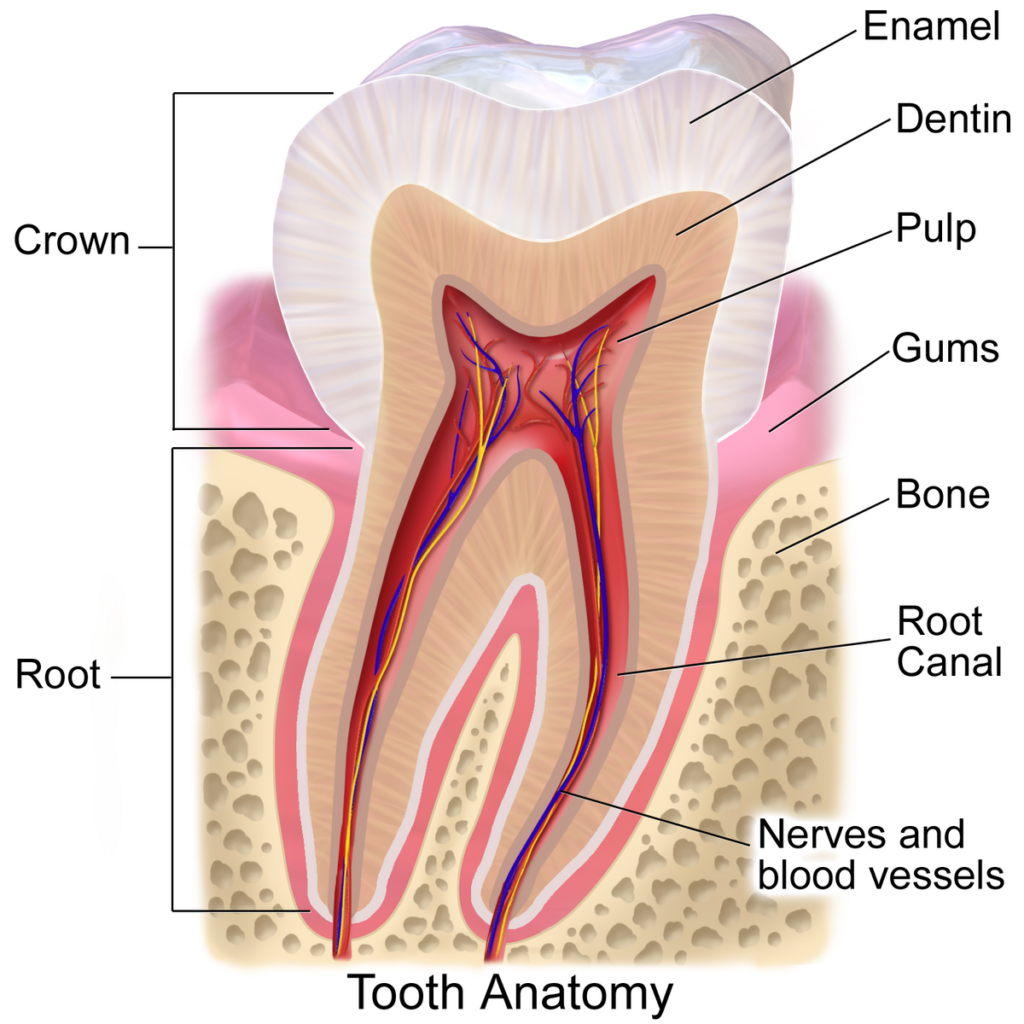If you’re experiencing pain in your tooth, you may be wondering whether you need a root canal or a filling. What’s the difference? And when do you need each one? In this article, we’ll discuss the differences between root canals and fillings, and help you decide which is the best option for you.
Understanding the Difference Between a Filling and a Root Canal

The main difference between a root canal and a filling is the depth of the procedure. Your tooth is made up of three layers: the enamel, dentin, and pulp. Bacteria in your mouth create acids as it digests your food which can wear away all layers of your tooth, starting with your enamel. The longer you wait to get your teeth fixed, the deeper into your tooth, the damage will go.
Fillings are used to fill in cavities, crevices, and other minor damage to your teeth. This damage will typically be just in the enamel layer and dentin layer. They’re typically done on the surface of the tooth and can involve removing a small amount of decay or damaged tissue. This will be replaced with an artificial filling material, such as amalgam or composite.
Root canals, on the other hand, are more invasive than fillings. Root canals are used when the bacteria have spread further into the root and pulp layer of the tooth. The root canal process involves removing the infected root and pulp, cleaning out the inside of the tooth and filling it with root canal material. A crown is then put over the root canal-filled tooth as a protective measure.
So when do you need a root canal vs filling?
Unfortunately, it can be very hard for an individual to tell how much damage to their tooth has been done and whether they need a root canal or filling. Typically, the two types have very similar symptoms: pain and sensitivity. When the damage has reached the roots of your teeth, which means you will need a root canal, the pain will often be more extreme and sharp. In comparison, a cavity will be more like a dull throb. This is because the pulp and root of your have the nerves of your tooth located in them. Other differences between the two include the following:
Signs You Need a Filling (You have a small cavity):
- Darker spots or holes near your teeth
- Pain in the tooth
- Sensitivity to hot, cold, and sweets
- Bad breath
A more in-depth guide on what a cavity feels like can be found here.
Signs You Need a Root Canal (You have more serious dental decay):
- Loose teeth
- Swollen gums
- Pain in the tooth
- Sensitivity to hot, cold, and sweets
- Bad breath
The best way to determine if you need a root canal vs a filling is to visit your dentist, who will be able to take X-rays of your teeth and assess the amount of decay. If there is only minor damage, a filling may be recommended. However, if the bacteria have spread further into the root and pulp of the tooth, a root canal is necessary. In extreme cases where the structure of the tooth has been compromised, the tooth may need to be extracted.
This is why it is so important to see a dentist regularly and get any decay in your teeth fixed as quickly as possible. That way, you can save yourself from needing root canals and extractions down the line, which are must more costly in comparison. These two treatments are also completely unavoidable with proper oral health care (You can even reverse a cavity this way!). This includes:
- Brushing twice a day: You should brush at least twice a day to remove plaque and bacteria. Make sure to brush near your gumline and the back of your teeth. These are the most commonly missed spots.
- Flossing at least once a day (recommended twice): Flossing can help remove plaque and bacteria from areas that your toothbrush can’t reach. Floss in a C-shape motion around each tooth, going below the gumline.
- Using fluoride toothpaste: Fluoride toothpaste can help protect your teeth from damage. It does this by strengthening your teeth and preventing cavities.
Closing Thoughts
In conclusion, root canals and fillings are two very different treatments for tooth decay. Fillings are used on minor damage to the enamel and dentin layers, while root canals are used when the damage has spread further into the root and pulp layer. Visual signs of each may look similar, but your dentist will be able to take X-rays of your teeth and determine what type of treatment is needed. It’s important to visit your dentist regularly in order to avoid needing root canals or extractions down the line.
Disclaimer
The contents of this website, such as text, graphics, images, and other material are for informational purposes only and are not intended to be substituted for professional medical advice, diagnosis, or treatment. Nothing on this website constitutes the practice of medicine, law or any other regulated profession.
No two mouths are the same, and each oral situation is unique. As such, it isn’t possible to give comprehensive advice or diagnose oral conditions based on articles alone. The best way to ensure you’re getting the best dental care possible is to visit a dentist in person for an examination and consultation.
SAVE TIME AND MONEY AT ANY DENTIST

Less dental work is healthier for you. Learn what you can do to minimize the cost of dental procedures and avoid the dentist altogether!

